That is the day that South Africans from all walks of life will celebrate the dawn of freedom and democracy and the achievements made in moving the country away from hatred, divisions and a painful history - to build a common future together.
 Vuk’uzenzele takes a look at the significance of this day and what it means to us as South Africans.
Vuk’uzenzele takes a look at the significance of this day and what it means to us as South Africans.
On 27 April 1994, South Africa held its first non-racial, democratic elections. A new government was elected under the leadership of the late former President Nelson Mandela. A lot has been achieved over the years, but more still needs to be done to improve our country and change the lives of all South Africans.
The month is not only for reflection of how far we have come as a country, but it is also a time that South Africa celebrates its heroes and heroines through the National Orders. The National Orders are the highest awards that a country, through its President, bestows on its citizens and eminent foreign nationals.
The Constitution of South Africa
The Constitution was drafted in terms of Chapter 5 of the interim Constitution (Act 200 of 1993) and was first adopted by the Constitutional Assembly on 8 May 1996. It was signed into law on 10 December 1996.
National symbols
South Africa is unique in the fact that we can celebrate our diversity through our national symbols and National Flag, the Anthem of South Africa and the Coat of Arms.
The South African Flag is unique and was designed by former South African State Herald, Fred Brownell, and was first used on 27 April 1994.
The colours of the flag have no specific meaning - therefore no universal symbolism should be attached to the colours of the flag.
The ‘V’ in the flag symbolises the coming together of different elements of South Africa and taking the road ahead together in unity.
Among our national symbols are:
| National animal | National flower | National tree | National bird | National fish |
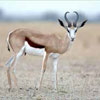 |
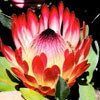 |
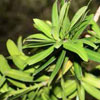 |
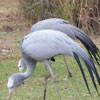 |
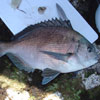 |
| Springbok | King Protea | Real Yellowwood | Blue Crane | Galjoen |
Flying the flag
When the flag is displayed vertically against a wall, the red band should be to the left of the viewer with the hoist or the cord seam at the top. When it is displayed horizontally, the hoist should be to the left of the viewer and the red band at the top. When the flag is displayed next to or behind the speaker at a meeting, it must be placed to the speaker's right. When it is placed elsewhere in the meeting place, it should be to the right of the audience.
The National Coat of Arms
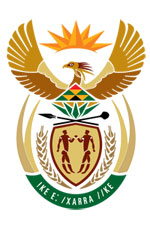 South Africa’s Coat of Arms, or state emblem, is the highest visual symbol of the state. Its central image is a secretary bird with uplifted wings, a sun rising above it. Below the bird is the protea, an indigenous South African flower, representing the aesthetic harmony of all cultures and the country flowering as a nation.
South Africa’s Coat of Arms, or state emblem, is the highest visual symbol of the state. Its central image is a secretary bird with uplifted wings, a sun rising above it. Below the bird is the protea, an indigenous South African flower, representing the aesthetic harmony of all cultures and the country flowering as a nation.
The ears of wheat are emblems of the fertility of the land, while the tusks of the African elephant symbolise wisdom, steadfastness and strength.
At the centre stands a shield signifying the protection of South Africans, above which are a spear and knobkerrie. These assert the defence of peace rather than a posture of war.
Within the shield are images of the Khoisan people, the first inhabitants of the land. The figures are derived from images on the Linton Stone, a world-famous example of South African rock art. The motto of the coat of arms - !ke e:/xarra//ke - is in the Khoisan language of the /Xam people, and means “diverse people unite”, or “people who are different joining together”.
The National Anthem
Our National Anthem is unique as it is sung in four different languages. The National Anthem was announced in 1997. It is a shortened, combined version of two anthems (‘Nkosi Sikelel’ iAfrika’ and ‘The Call of South Africa’/’Die Stem van Suid-Afrika’); sung between 1994 and 1997.



 Facebook
Facebook Twitter
Twitter WhatsApp
WhatsApp